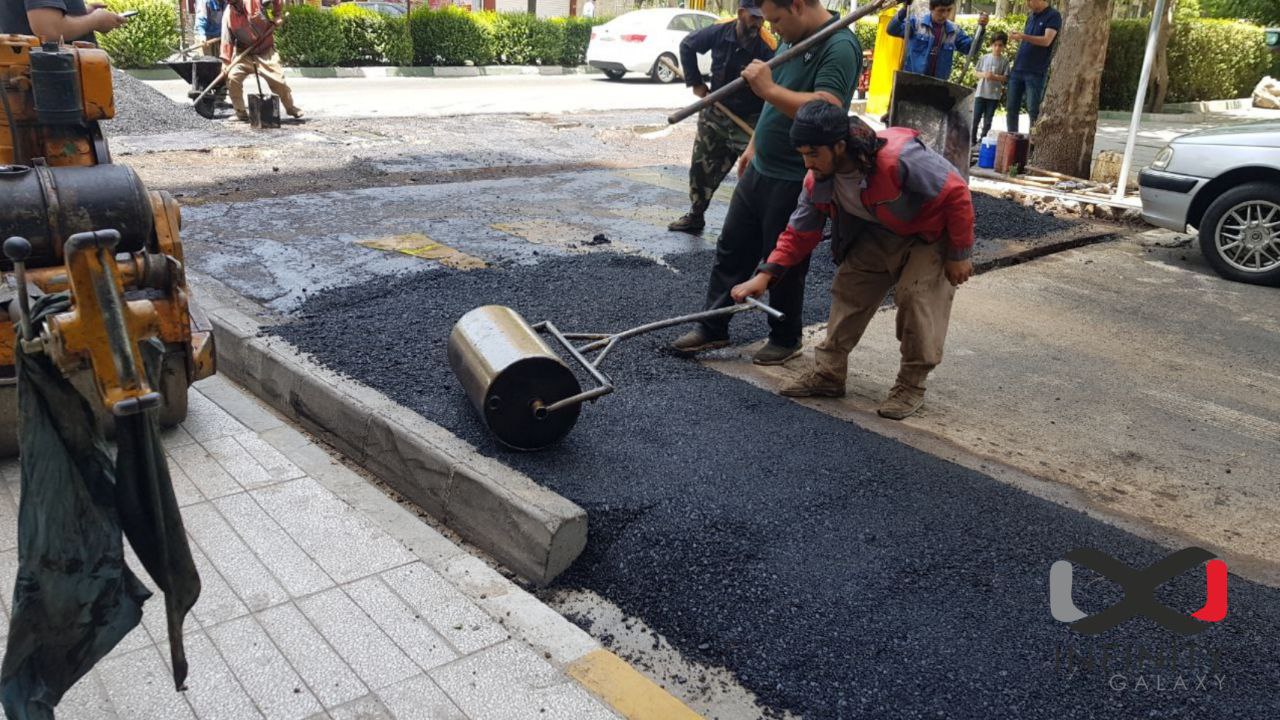Opening the Keys of Warm Mix Asphalt Modern Technology
Discovering the midsts of warm mix asphalt modern technology reveals a globe where precise processes and accurate formulations converge to form our roadways and facilities. The combination of aggregates, fillers, and binders isn't simply a construction task yet a critical orchestration of longevity and performance. As we peer into the elaborate dancing of parts, a tapestry of durability and sustainability unfolds. Yet what exists below this surface area of asphaltic proficiency, and what secrets wait to be introduced in the world of paving innovations?
Importance of Warm Mix Asphalt
Hot Mix Asphalt plays an important function in contemporary facilities growth due to its durability and cost-effectiveness. As the most commonly used paving product for roadways, freeways, and car park whole lots, Warm Mix Asphalt supplies an array of advantages that add to its value in building jobs.
The sturdiness of Hot Mix Asphalt stems from its composition, that includes accumulations, binder, and filler products that are very carefully chosen and mixed to meet details efficiency demands. This exact combination results in a adaptable and solid sidewalk that can endure frequent use without significant wear and tear. In Addition, Warm Mix Asphalt is 100% recyclable, additional enhancing its sustainability and ecological benefits. In general, the significance of Warm Mix Asphalt in facilities development can not be underrated, as it proceeds to be a cornerstone of modern-day building practices.
Components of Asphalt Mixes
The structure of asphalt mixes consists of meticulously picked aggregates, binder, and filler materials that are essential for accomplishing certain efficiency demands. Accumulations are the key part of asphalt blends, giving toughness and security. The binder, typically bitumen or asphalt cement, holds the aggregates with each other and provides flexibility and resilience to the mix.
The combination and proportion of these components play a significant role in identifying the quality and performance of the asphalt mix. Designers meticulously design the mix to fulfill details needs, taking into consideration aspects like web traffic volume, climate problems, and sidewalk life expectancy. Appropriate selection and balancing of accumulations, binder, and fillers are crucial for developing long lasting, lasting asphalt pavements.
Combining and Manufacturing Methods

Once the accumulations are selected, the binder, often asphalt cement, is included in bind the products with each other. The binder's high quality and amount substantially affect the mix's adaptability, toughness, and resistance to ecological aspects. Furthermore, fillers like hydrated lime or Rose city concrete might be integrated to enhance details features of the asphalt mix, such as its workability or wetness resistance.
During manufacturing, the accumulations and binder are heated, generally in between 250-325 ° F(121-163 ° C ), to assist in mixing and make certain correct finishing of the aggregates. The blending process must be detailed to accomplish a homogeneous blend that promotes the wanted efficiency characteristics of the asphalt. Numerous methods, such as batch blending or drum mixing, are used to achieve constant and top quality asphalt blends for building and construction tasks.
Aspects Influencing Asphalt Performance
Factors influencing asphalt performance a knockout post include an array of variables that influence the resilience, durability, and total top quality of asphalt sidewalks. One key element is the high quality of products made use of in the asphalt mix.

Environmental problems also affect asphalt efficiency. Temperature variants, dampness infiltration, and web traffic loads can all affect the architectural integrity of the sidewalk. Style factors to consider, such as pavement thickness and water drainage, are essential in making sure the lasting performance of the asphalt pavement. By meticulously considering these factors, professionals and engineers can enhance asphalt efficiency and improve the life span of sidewalks.
Sustainable Practices in Asphalt Technology

Furthermore, the advancement of warm-mix asphalt (WMA) technologies has actually gotten traction recently. WMA enables the production and placement of asphalt blends at lower temperature levels contrasted to conventional hot-mix asphalt, resulting in lowered energy consumption and greenhouse gas exhausts. Additionally, making use of permeable asphalt mixes can aid alleviate stormwater runoff concerns by allowing water to penetrate with the sidewalk and into the ground, advertising natural water filtration and charge processes. By carrying out these sustainable methods, the asphalt sector can contribute to constructing a more eco friendly and durable framework network.
Final Thought
Finally, warm mix asphalt modern technology plays an essential role in contemporary framework growth as a investigate this site result of its durability and cost-effectiveness. By thoroughly balancing components, employing proper mixing strategies, and taking into consideration numerous variables, designers can develop top notch asphalt blends that stand up to heavy web traffic loads and severe weather problems. Welcoming lasting methods, such as using recycled materials and warm-mix modern technologies, even more enhances the ecological kindness of asphalt technology.
Blending and check here production techniques in warm mix asphalt innovation involve the specific mix and processing of accumulations, binder, and fillers to produce a high-performance and sturdy asphalt mix.Aspects influencing asphalt efficiency include a range of variables that influence the sturdiness, longevity, and total high quality of asphalt sidewalks. Sustainable techniques in asphalt innovation encompass different initiatives intended at reducing the ecological impact of asphalt manufacturing and paving processes. By integrating reclaimed asphalt sidewalk (RAP) and recycled asphalt shingles (RAS) into brand-new asphalt mixes, the sector can considerably lower the consumption of raw products and power, while likewise lowering landfill waste.
WMA enables for the manufacturing and placement of asphalt blends at reduced temperatures contrasted to traditional hot-mix asphalt, resulting in decreased power consumption and greenhouse gas discharges.